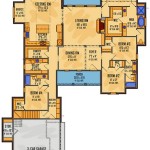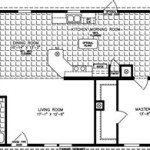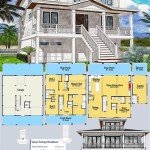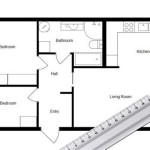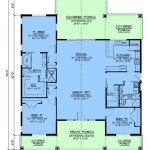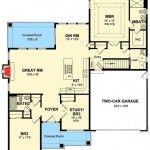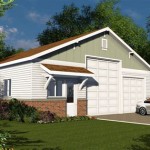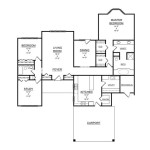Exploring Log Cabin Style Home Plans: Design, Functionality, and Considerations
Log cabin style home plans represent a significant departure from conventional residential architecture, offering a unique blend of rustic aesthetics and modern living. The appeal of these homes lies in their inherent connection to nature, their warm and inviting atmosphere, and their potential for energy efficiency. Developing a comprehensive log cabin style home plan requires careful consideration of various factors, ranging from site selection and material sourcing to interior layout and construction techniques.
A defining characteristic of log cabin homes is their construction primarily using logs, either hand-hewn or milled. The method of interlocking these logs contributes significantly to the structural integrity and insulation properties of the home. Furthermore, the aesthetic of the log cabin is heavily influenced by the type of wood used and the style of notching or joinery employed. This article will explore the diverse aspects of log cabin style home plans, encompassing design considerations, functional requirements, and key factors that influence the overall success of the project.
Understanding Different Log Cabin Styles
The term "log cabin" encompasses a broad range of architectural styles and construction techniques. From traditional frontier dwellings to modern luxury residences, log cabin homes exhibit significant variation in design and materials. Understanding these distinctions is crucial when selecting or developing a log cabin style home plan.
Traditional log cabins, typically associated with early American settlers, were characterized by their simplicity and functionality. These cabins were often constructed using locally sourced logs, with minimal processing or refinement. The focus was on providing basic shelter from the elements, and the design was generally minimalist, with limited interior space and few amenities. The construction method often involved corner notching, such as dovetail or saddle notch, to interlock the logs and create a sturdy structure.
In contrast, modern log cabin homes incorporate a wide range of design elements and luxurious amenities. These homes may feature expansive floor plans, multiple bedrooms and bathrooms, gourmet kitchens, and sophisticated entertainment systems. The logs used in modern construction are often milled to precise dimensions, ensuring a consistent and aesthetically pleasing appearance. Furthermore, modern log cabin homes may incorporate non-log elements, such as stone fireplaces, timber frame accents, and large windows, to enhance their architectural appeal and functionality.
Another distinctive style is the Scandinavian log cabin, often characterized by its use of round logs and intricate joinery. These cabins often feature steeply pitched roofs to shed snow effectively and are designed to maximize natural light. Scandinavian log cabins are known for their energy efficiency and their ability to blend seamlessly with the surrounding natural environment.
The choice of log cabin style will ultimately depend on individual preferences, budget considerations, and the specific characteristics of the building site. A well-developed log cabin style home plan will take into account these factors and create a design that is both aesthetically pleasing and functionally sound.
Key Design Considerations for Log Cabin Home Plans
Developing a successful log cabin style home plan requires careful consideration of several key design elements. These include the floor plan layout, the selection of materials, the incorporation of energy-efficient features, and the overall aesthetic of the home.
The floor plan layout is a critical aspect of any log cabin home plan. The design should optimize the use of space and create a functional and comfortable living environment. Considerations should be given to the size and layout of the living room, kitchen, bedrooms, and bathrooms. The flow of traffic within the home should be carefully planned to ensure ease of movement and minimize congestion. In smaller log cabins, open floor plans are often preferred to maximize the sense of space. In larger homes, a more traditional layout with defined rooms may be more appropriate.
The selection of materials is another important design consideration. The type of wood used for the logs will significantly impact the appearance, durability, and insulation properties of the home. Commonly used woods include pine, cedar, and spruce. Each type of wood has its own unique characteristics, such as its resistance to decay, its density, and its grain pattern. The selection of roofing materials, windows, and doors should also be carefully considered to ensure compatibility with the overall design and to provide adequate protection from the elements.
Energy efficiency is an increasingly important design consideration for log cabin homes. Incorporating energy-efficient features, such as high-performance windows, insulation, and renewable energy systems, can significantly reduce energy consumption and lower utility bills. Passive solar design principles can also be implemented to maximize the use of natural sunlight and reduce the need for artificial lighting and heating. Proper sealing of the logs is essential to prevent air infiltration and maintain a comfortable indoor temperature.
The overall aesthetic of the log cabin home should reflect the owner's personal style and preferences. This includes the selection of colors, textures, and finishes. The use of natural materials, such as wood and stone, can enhance the rustic charm of the home. The incorporation of decorative elements, such as handcrafted furniture, vintage lighting fixtures, and rustic artwork, can further personalize the space and create a warm and inviting atmosphere. Careful attention to detail is essential to ensure that the log cabin home is both aesthetically pleasing and functionally sound.
Essential Functional Requirements for Log Cabin Living
Beyond aesthetics, log cabin style homes must meet essential functional requirements to provide a comfortable and safe living environment. These requirements encompass structural integrity, weather resistance, accessibility, and compliance with building codes and regulations.
Structural integrity is paramount for any log cabin home. The logs must be properly interlocked and secured to create a stable and durable structure that can withstand the forces of wind, snow, and seismic activity. The foundation must be adequately sized and reinforced to support the weight of the logs and to prevent settling or cracking. Regular maintenance and inspection are essential to ensure the long-term structural integrity of the home.
Weather resistance is another critical functional requirement. The logs must be properly sealed and treated to prevent water damage, insect infestation, and decay. The roof must be designed to effectively shed water and snow, and the windows and doors must be properly sealed to prevent drafts and leaks. Adequate ventilation is essential to prevent moisture buildup and maintain a healthy indoor air quality. The landscaping around the home should be designed to promote drainage and prevent water from pooling around the foundation.
Accessibility is an important consideration for log cabin homes, particularly for individuals with mobility limitations. The design should incorporate features such as ramps, wide doorways, and accessible bathrooms to ensure that the home is usable by people of all abilities. Universal design principles can be implemented to create a home that is both functional and aesthetically pleasing for everyone.
Compliance with building codes and regulations is a legal requirement for all log cabin homes. The design must meet local and national building codes for structural safety, fire resistance, energy efficiency, and accessibility. Obtaining the necessary permits and inspections can ensure that the home is built to code and meets all applicable safety standards. Failure to comply with building codes can result in costly delays and penalties.
Furthermore, site planning plays a vital role in the functionality of a log cabin. The orientation of the cabin relative to the sun, prevailing winds, and surrounding landscape can significantly impact energy efficiency and comfort. Proper drainage, access roads, and utility connections are also essential considerations.
Effective log cabin style home plans therefore prioritize both the aesthetic appeal and the practical needs of the occupants, ensuring a comfortable, safe, and sustainable living environment.

10 Bedroom Log Cabin Floor Plans Ideas House Home

Pin On House

Cabin Style House Plan 3 Beds 2 Baths 1659 Sq Ft 47 437 Lake Plans Sims

Log Cabin House Plan 2 Bedrms Baths 1362 Sq Ft 205 1018

Stone Mountain Cabin Plans Tiny House Blog Sims

Cottage Style House Plans Custom English Home Designs

45 Log Home Ideas Homes House Plans Cabin Floor
:max_bytes(150000):strip_icc()/SL-988_FCR-0a1aa759de95445a96be45a8aefc2749.jpg?strip=all)
Cabins And Cottages Under 1 000 Square Feet

Custom Log Home Floor Plans Katahdin Homes

Small Cabin House Plans With Loft And Porch For Fall Houseplans Blog Com

